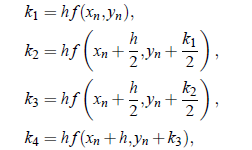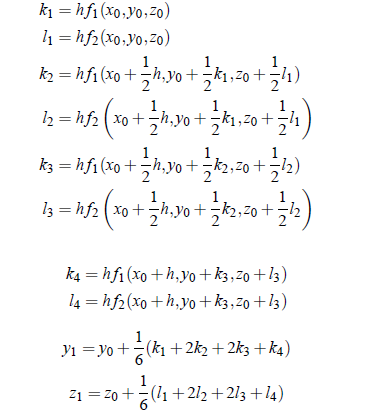SKEDSOFT
Runge-Kutta Method:
C Runge and W. Kutta, two German mathematicians, developed this method and as such the method was named after them. It was developed to avoid the computation of higher order derivations which Taylor’s method involves. Runge-Kutta formulas posses the advantage of requiring only the functional values at some selected points. This method agrees with Taylor’s series solutions up to the term hr where r differs from method to method and is called the order of that method. Here, we will discuss Runge-Kutta method of order four.
Fourth Order Runge-Kutta Method:
Computational procedure for Runge-Kutta Method of Order Four: The computational procedure for Runge-Kutta method of order four is given as follows:
Step 1. Define f (x, y), x0, y0, and xn.
Step 2. Find h by using (xn−x0)/n.
step 3. Find k1, k2, k3, k4 and

and therefore k = 1/6 (k1 2k2 2k3 k4) Step 4. Find yn 1 = yn k., then do successive iteration up to required accuracy.
Simultaneous First Order Differential Equations:
The simultaneous equations dy/dx = f1 (x, y, z) and dz/dx = f2 (x, y, z) given the initial conditions y (x0) = y0, z(x0) = z0. Now, starting from (x0, y0, z0) the increments △y and △z in y and z respectively are given by formulae,

Thus, we get (x1, y1, z1). Similarly we can get (x2, y2, z2) by repeating the above method starting with (x1, y1, z1).